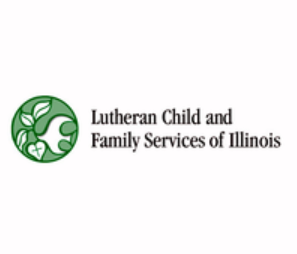 The Council on Accreditation is one of the nation’s premier accrediting bodies for human service organizations. Out of 75 applicants for the agency’s prestigious 2019 Innovative Practices Award, which recognizes “successful approaches to management and service delivery practices adopted by our accredited organizations,” the Regenerations program at Lutheran Child and Family Services of Illinois received the distinction.
The Council on Accreditation is one of the nation’s premier accrediting bodies for human service organizations. Out of 75 applicants for the agency’s prestigious 2019 Innovative Practices Award, which recognizes “successful approaches to management and service delivery practices adopted by our accredited organizations,” the Regenerations program at Lutheran Child and Family Services of Illinois received the distinction.
The program aims to get “dually-involved” youth – foster care children who are also caught up in the criminal justice systems – on the right track. In Illinois, many detained or imprisoned foster care youth remained incarcerated long after their sentences expired because the state lacked the appropriate resources to serve them.
Attesting to the program’s success, 300 participants have been released from detention or prison an average of 42 days beyond their sentences, compared with 116 days for a comparable population. Nine out of ten youth in Regenerations avoid re-incarceration and the program places 100% of its population outside of residential care – versus 37% for the comparison group. And, the program costs $118 per day per youth served as opposed to $300 to $500 a day for residential care.
Accreditation Guru spoke with Mike Bertrand, president and CEO of Lutheran Child and Family Services and a co-founder of the Regenerations program.
Accreditation Guru: How did this program get started?
Mike Bertrand: There was a large hole and an under-served population that was being dealt with in an inappropriate way. At the time in Illinois, we had an extensive amount of youth either in juvenile or adult prison being kept past their release date because there was no program or place for them to go.
AG: So you came up with specific strategies.
MB: We knew that we had expertise in the child welfare world, but we didn’t have expertise in the criminal justice or juvenile delinquency realm. So we sought partners, including Youth Advocate Programs, with more experience in the criminal justice arena around the country. From there, we did a search with the assistance of Chapin Hall at the University of Chicago to find programs that we could learn from and we couldn’t locate anything. So Chapin Hall and LCFS – in consultation with Youth Advocate Programs, as well as the Illinois Department of Children and Family Services – put our heads together and used what we felt were state-of-the-art interventions in terms of how we could achieve successful outcomes for youth.
AG: If you were to boil down the keys to success, what would they be?
MB: The culture we built in the program comes down to Never Give Up. Most of these kids are used to having promises made and then they screw up and people walk away. You can dislike the behavior but not the individual doing the behavior. It’s not like we excuse it when we have a youth re-offend or do something inappropriate, but that doesn’t devalue the person.
AG: Can this program be replicated?
MB: To be successful, you have to have a significant risk tolerance with this population because you have significant behavior that needs to be dealt with. You also need to have a strong belief in kinship care. Our success in deflecting youth from residential placement has largely relied on relatives. The most important things are having a real heart for the population and the problems that come with them, as well as having a belief in kinship care and the willingness to adhere to the code of No Rejects, No Ejects.
AG: You also license foster families.
MB: Not all youths are placed with relatives. About half are placed with licensed foster parents that we recruited and trained and take through the state’s licensing process. We make sure they have the heart and the willingness to provide a home and support for kids who are trying to go a different route. We’ve selected and recruited people for this population and we also have longstanding foster parents that we felt would be good with these youth.
AG: Regenerations provides a lot of assistance. Is some of that financial on top of counseling and other services?
MB: We create individualized services for each youth in terms of what they need. So yes, if needed, we may have to move a family out of a certain neighborhood either to avoid gang territory they need to walk through or if they’re at risk in that territory that has some gang activity and want to get out of it and avoid a peer group that may use violence. We also hire folks who know how to navigate the communities and the informal structures that exist in those communities within Chicago. If necessary, we will provide monetary assistance. We will rent a truck and have staff help move or provide a first month’s deposit if a family doesn’t have that. We have also supported work efforts. If a youth is trying to build on his or her strength, say be an auto mechanic, for example, if they have done well in a traditional structured environment and can tolerate that type of program, we’ll send them to community college. But if they cannot, we’ll go to a community resource. We’ll ask the local repair shop around corner if they’re willing to give them a chance and we’ll pay their salary for the first couple of months and if they work out, then they pick up that salary. That’s the only time we put money into the youth’s pocket, other than the allowance they’re required to receive under state standards.
AG: How long have you been accredited by COA and how has accreditation contributed to the program’s success?
MB: That’s a good question. I know we were one of the first in Illinois to be accredited but we’ll have to check [37 years]. Meeting the national standards for quality and the standards of what a human services organization that’s focused on quality should look like helps provide a yardstick and a guide in all of our programs. When we designed Regenerations, [being accredited] helped to ensure that quality people with the proper education and background, that the proper mix of professional services are in place and that the administrative standards that we have and the metrics are in place to support the staff that is doing very difficult work.
AG: The avoidance of residential care mirrors the goals of the 2018 federal Family First Prevention Services Act.
MB: We realized that residential treatment was not the appropriate services for our primary population. That is what Illinois was doing – sending every kid who came out of prisons straight into residential, but many of the kids did not have serious mental health issues that needed residential treatment. It was really more, for lack of a better term, the street behavior. So they didn’t do well in residential. In fact many of them ran away, which violated their parole and they’d go back into prison. What we did was say “let’s put them where they want to go.” We know in foster care and child welfare that when kids run away, 99% of the time we know where they go – right back to relatives or whomever they deem as their family. So Illinois would cut them off from services, but we said “let’s give them the same level of service no matter where they’re at and put them where they’re going to run away to anyway.” Any time a child can be cared for in the least restrictive environment possible, that’s what’s appropriate.




